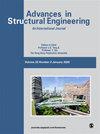The investigation of the effect of operating conditions in gearboxes on efficiency
IF 2
4区 工程技术
引用次数: 0
Abstract
Efficiency is a concept that evaluates the optimal utilization of resources, including time, energy, finances, or materials, in order to accomplish a particular goal or objective. As widely acknowledged, energy losses occur in systems involving relative motion between interacting machine elements due to friction. In the case of a gearbox, these losses can arise from tooth friction in the gear mechanism, friction in sealing elements, friction in roller bearings, and the influence of the lubricant used in the system, all of which are subject to environmental conditions. This study aims to experimentally determine the efficiency of the gearbox under various operating conditions by considering the gearbox as a comprehensive system encompassing all its components. A measurement system was designed in order to obtain the efficiency of a gearbox. Experiments and measurements were carried out via software support. The measurement system contains two torque transducers, electrical resistive load device, an electrical motor with temperature measurement thermocouple, and two stage helical gearbox. In experiments conducted through computer commands, input revolutions were incrementally increased with 400 rpm intervals within the range of 700–2700 rpm. Moreover, experiments were carried out at different lubricant levels in the gearbox. At the same time lubricant temperature was measured and effects to the gearbox efficiency were investigated. Subsequently, different lubricant with distinct viscosity indices were employed. As a result of this experimental design, regime efficiency values were obtained for each case. Thus, power loss of the gearbox system has been determined. These results were examined using a general full factorial design. Analysis of variance (ANOVA) tables were created and the effects of the parameters on the system and the efficiency results were determined by checking whether the parameters were interacting or not. Finally, regression analysis was performed and the regression function was obtained in order to develop a predictive model to estimate the efficiency of a gearbox.齿轮箱工作条件对效率影响的研究
效率是一个评估资源(包括时间、能源、资金或材料)最佳利用情况的概念,以实现特定的目标或目的。众所周知,在涉及相互作用的机器元件之间的相对运动的系统中,由于摩擦会产生能量损失。就变速箱而言,这些损失可能来自齿轮机构中的齿摩擦、密封元件中的摩擦、滚动轴承中的摩擦以及系统中使用的润滑剂的影响,所有这些都会受到环境条件的影响。本研究旨在通过实验确定齿轮箱在各种工作条件下的效率,将齿轮箱视为一个包含其所有组件的综合系统。为了获得齿轮箱的效率,设计了一套测量系统。实验和测量通过软件支持进行。测量系统包括两个扭矩传感器、电阻负载装置、带温度测量热电偶的电机和两级螺旋齿轮箱。在通过计算机指令进行的实验中,输入转数在 700-2700 转/分钟的范围内以 400 转/分钟的间隔递增。此外,实验还在齿轮箱内不同的润滑油水平下进行。同时还测量了润滑油温度,并研究了其对变速箱效率的影响。随后,采用了不同粘度指数的润滑油。由于采用了这种实验设计,每种情况下都获得了不同的效率值。从而确定了齿轮箱系统的功率损耗。这些结果采用一般的全因子设计进行检验。创建了方差分析(ANOVA)表,并通过检查参数是否相互影响来确定参数对系统和效率结果的影响。最后,进行了回归分析,获得了回归函数,以便开发一个预测模型来估算齿轮箱的效率。
本文章由计算机程序翻译,如有差异,请以英文原文为准。
求助全文
约1分钟内获得全文
求助全文
来源期刊

Advances in Mechanical Engineering
Engineering-Mechanical Engineering
自引率
4.80%
发文量
353
期刊介绍:
Advances in Mechanical Engineering (AIME) is a JCR Ranked, peer-reviewed, open access journal which publishes a wide range of original research and review articles. The journal Editorial Board welcomes manuscripts in both fundamental and applied research areas, and encourages submissions which contribute novel and innovative insights to the field of mechanical engineering
 求助内容:
求助内容: 应助结果提醒方式:
应助结果提醒方式:


